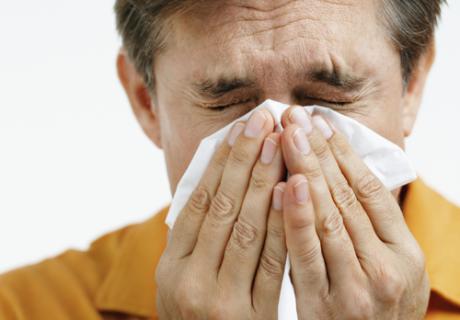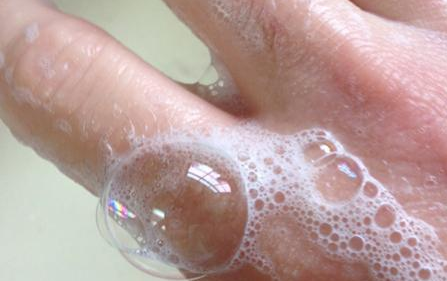Discussing current hot topics in dental infection control
On the cusp of the organization’s 30th anniversary, OSAP’s thought leaders sat down again with Dental Products Report for a candid roundtable discussion on how far infection control has come in the dental industry … and how far it still has to go.
On the cusp of the organization’s 30th anniversary, OSAP’s thought leaders sat down again with Dental Products Report for a candid roundtable discussion on how far infection control has come in the dental industry … and how far it still has to go.
Ultimate Guide: Your guide to what's new in infection control
With Ebola making headlines this summer and the battle against infectious disease always underway, we thought it wise to chat again with members of the Organization for Safety, Asepsis and Prevention (OSAP), which is dentistry’s authority on issues of infection control and prevention. While a lot has changed in the 30 years since OSAP began, much remains the same, including the daily battle to prevent the spread of infections and diseases to dental patients and dental team members.
Following up on our conversation from the April edition of DPR, I recently had the opportunity to sit down with some of the most respected thought leaders in the country on the topic of infection control and prevention and pick the brains of these individuals who have played and continue to play a key role in OSAP. The panel included Kathy Eklund, RDH, MHP, Mary Govoni, CDA, RDH, MBA, Dr. Chris Miller and Dr. John O’Keefe.
DPR:Let’s start off with a nice, broad question. What are some of the main infection control issues facing dental practices today?
Govoni: There are way too many dental practices out there that believe the CDC guidelines are just guidelines and not the standard of care. It may take another Tulsa situation to bring the rest of the stragglers to the finish line. As a result of Tulsa, I think there is better awareness for spore testing. I was truly amazed by the lack of compliance before, but it has improved greatly since then.
News of rogue Tulsa-based oral surgeon prompts ADA infection control statement
Eklund: One of the biggest issues is that only certain states have regulated that a dental practice must have infection control continuing education. There also needs to be more regulatory authority behind implementation of the CDC guidelines that Mary mentioned. Without that and the dissemination of proper infection control information, there will always be dental practices that don’t comply.
O’Keefe: It’s quite a challenge reminding dental practitioners that the risks they face on a daily basis are real. It’s not only OSAP’s duty but the duty of every dental team member to ensure that the proper protocols are in place. Without that, risky behavior will occur and so will problems that could’ve been avoided.
Miller: I think the biggest problem is that most offices don’t have an infection control coordinator. This means there may not be anyone in the office who is dedicated to ensuring that proper, up-to-date infection control procedures are followed. It’s absolutely one of the major problems we face today.
3 main steps for a proper infection control process
OSAP reacts to infection control breach
DPR:What are some of the biggest challenges today when it comes to maintaining infection control protocol?
Miller: Again, I think it goes back to there not being an infection control coordinator in the practice. Also, a lot of offices are very complacent. They don’t feel like they have to be on their guard because nothing bad has ever happened to them. Complacency can be very tough to overcome.
Govoni: In the majority of practices, it’s the dental assistant who is responsible for much of the infection control protocol. Yet, one of the challenges is that there is no standard infection control education for dental assistants in place from state to state. In many dental practices, assistants are trained on the job and could well be trained by another assistant when it comes to infection control protocol. What if that assistant who is doing the training hasn’t been properly educated? Until we have a higher level of education for dental assistants, we will always have problems.

Key opinion leaders and DUX Dental launch Support Clean Dentistry campaign
O’Keefe: I think it’s important to recognize that things aren’t going to change overnight. Look back at how we did things in the dental practice 30 years ago versus today. We have advanced a long way in that time. We have to realize that we are still moving forward, and we have to realize that we must be persistent, patient, and practical in that movement. We also have to reward excellence in safe dental care as much as we call attention to those who put their patients and themselves at risk.
Eklund: Honestly, unless there is regulatory authority and the market demands a better trained dental assistant, there’s not going to be the change we would all like to see.
O’Keefe: That’s true, but look at how much the dental patient is aware of infection control procedures today versus 30 years ago. They notice what is going on and they are asking questions. The demand for proper care is so important, and I think that is raising the bar for all dental professionals, including the dentist. The world isn’t going to change tomorrow, but we have to keep after it. One of OSAP’s main roles is beating the drum to raise that awareness. Awareness is one element in affecting change and OSAP is committed to providing user-friendly education.
The List: Top 5 ways to avoid infection in your lab
Are you using too many chemicals in your dental practice?
DPR:We’ve talked about some of the bad, but let’s talk about some of the good things regarding infection control being done in dental practices today.
O’Keefe: Absolutely. We can’t beat ourselves up all the time. There is a lot of good being done today. When we hear about a protocol breach, it makes the news because it is the exception rather than the rule. I believe in my heart that every day, dental practitioners come into the practice wanting to do their best, both for themselves and their patients.
Govoni: And OSAP is here to help with that. We want to have all team members be credible and knowledgeable when their patients have questions about infection control. We have to be able to reassure our patients that we have their best interests in mind.
Miller: I will echo Mary’s point about OSAP. This is an organization that is dedicated to doing good and it has played a critical role for the dental industry. OSAP has made infection control information available to all dental professionals. I would also point out the decrease in Hepatitis B among healthcare workers because of the vaccine and infection control procedures.
Eklund: I see a lot of positives coming from the group practices. I see many of them investing in the necessary education and making infection control protocols a priority. With the growth of group practices throughout the country, I think that will help infection control education get legs and move further ahead which, in turn, helps the entire profession.
Free E-Book: A Guide to Surface Management and Infection Control
DPR:The Ebola virus was in the news this summer. While we don’t expect Ebola to impact our dental practices, what is a health concern that dental practitioners should be wary of as the year draws to a close?
Eklund:Influenza. It’s so important that every dental professional is immunized because of having so much contact with patients.
Govoni: There’s still an issue with Hepatitis C. There still isn’t a vaccine available for healthcare workers. Dental professionals have to be on guard and vigilant.
O’Keefe: You mentioned Ebola and I want to mention that there is a toolkit on that disease on the OSAP website if anyone needs to access it. Let’s remember that we are talking about infection control here, not infection elimination. Microbes will survive until the end of time because they will evolve. We all like to think that people will use antibiotics in a responsible way because the more they are used, the more the microbes will adapt to overcome them. It’s this way in all healthcare fields, and I believe dentistry can lead by example here.
Invasive weed may have provided surprising dental health benefits
9 simple steps to protect yourself and your dental staff from flu
DPR:What’s something in the infection control arena that you feel needs to change in the next five years?
Eklund: I have some concerns regarding the sense of comfort and potential apathy that develops when there is no perceived emerging infectious disease threat. Dental practices have to take a proactive approach every day to promote patient and provider safety. Creating a culture of safety among staff and having leadership who promotes infection prevention and control is key in preventing such apathy and potential non-compliance.
Govoni: There is still a lack of compliance with personal protective equipment protocol. We see all the time dental professionals who wear their facemasks wrong or don’t have the proper eye protection. Too many dental professionals think they are superheroes and nothing could ever happen to them.
O’Keefe: I couldn’t agree more. I see so many practices where inappropriate clothes are worn in the healthcare environment. This is healthcare, not a swimming pool. At the end of the day, as a patient, I expect to go into a healthcare environment and know that I will be safe. There’s a huge responsibility for every dental professional attached to that. I also believe manufacturers must start giving adequate sterilization instructions for use of their devices in the dental practice. If there’s a question about how a device can be safely reprocessed, that’s something that must be able to be answered quickly and correctly.
Miller: We have to battle complacency on a daily basis. There is always a threat from microbial diseases be they spread through direct contact, indirect contract, droplets or are airborne. Even though we know how to control most of the diseases we know of right now, we need to remain vigilant for new threats.
Top 25 Women in Dentistry 2014
DPR:What final thoughts would you like to leave with our readers?
Miller: Since you can’t always prove how well you’re doing with infection control procedures, you have to determine the correct way to perform a procedure and then perform it correctly every time. We have to remember that all of the microorganisms we have heard about for years are still here, and if you let your guard down, they will come out and bite you. We can’t take shortcuts with infection control.
Eklund: More and more dental practices are expanding their scope of services to include the use of Botox and other cosmetic procedures. These practices should ensure they have effective infection prevention and control protocols for these facial procedures, in addition to the intraoral procedures.
O’Keefe: The concept of the safe dental visit. Every dental practice should have a checklist and easy-to-understand way to make safe dentistry a part of its everyday environment. Dentistry is not isolated. It’s a part of the healthcare universe. Patient safety is central to any healthcare environment. Also, if you have an infection control coordinator in your practice, make sure that person is a member of OSAP. The knowledge we can share with that individual is immense.
Govoni: It’s simple … do the right thing. There are still so many dental professionals who think to themselves, “Why do I have to do this?” or “Why do I always have to change facemasks?” when it comes to infection control. The bottom line for everything that is done revolves around the safety of the patients and team.
3 main steps for a proper infection control process

Dr. John Flucke, Technology Editor for Dental Products Report, shares his views on technology and infection control:
As a profession, we are charged with a very important mission. We need to provide the best possible care to our patients while doing it in an environment that ensures their safety. Things like infection control should be at the forefront of what we do. For me, the way I look at this is a multi-step process ...
The first step in this process should begin with the manufacturer. It’s hard to overcome bad design and that goes for infection control considerations as well. In addition to how a device looks and feels, serious consideration should go into how it can be protected and/or disinfected.
Dr. John Flucke: Looking forwrd, looking back on dental technology predictions for 2014
Whether it is a device that has smooth, tightly fitting seams or a design that allows easy placement into a barrier, these are things that should be considered at the beginning of the design process. Also, creating devices out of materials that can withstand being exposed to surface disinfectants is very important.
The second step in this process should be with the dental office. No matter how well designed the product or device is, the team must make sure infection control is done properly and done properly every time. Sometimes I think it is easy for us to think, “we’ve got this” when it comes proper infection control, but we need to concentrate and do it properly every single time. That’s the only way to ensure we’ve done all we can to protect our patients and keep them healthy.
Related reading: Dr. John Flucke: Cloudy with a chance of computing
The third step is to put in place systems that help make sure we are doing everything we can. Things such as only opening bagged instruments after the patient is seated and checking the autoclave bags to make sure they have changed color before opening can help in this regard (granted, the change of color is not a guarantee of sterility, but it helps). Having a well-rehearsed routine that you go through every time helps prevent mistakes and sloppiness in the process.
There is also the routine of checking the autoclaves with spore testing to make sure they are performing correctly. A monitoring service can provide everything needed as well as function as a third party to verify all autoclaves are sterilizing properly and that the tests are being run on a regular basis.
Pride Institute's "Best of Class" 2014: Today's top technologies
One of the other “techy” things we’ve done is to incorporate an Internet-connected device that tracks and records every sterilization cycle on a built-in USB jump drive as well as emailing me an identical report every time the device runs a cycle. These reports let me know that the device is functioning properly and that no problems are being encountered.
The other thing to remember is to avail yourself of the knowledge of your dental sales reps. They are a great source of knowledge of the newest and best infection control products and will be happy to keep you informed of what you need to meet a specific infection control need. I look upon my distributor sales rep as an adjunct staff member and utilize his expertise of the newest and best products on a regular basis.
I think infection control is best looked upon as a never-ending journey. We never truly have it all figured out and need to be constantly vigilant to make sure we are doing all we can. I feel that if you are always striving to do the very best you can, even if you miss the target by a bit, you are still pretty close to the bullseye.
Related reading: Implementing eco-friendly infection control
As part of DPR’s partnership with OSAP, infection control thought leaders will be sharing their views through numerous Google Hangouts throughout the year. You can find the exclusive interviews on DentalProductsReport.com.

